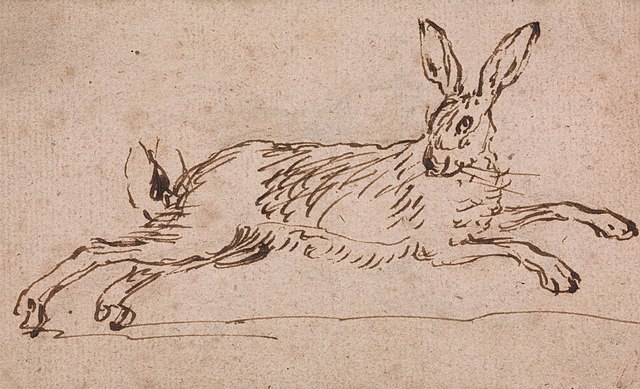
March Hares: Madness, Magic And Myth
The animal most commonly associated with the month of March is surely the ‘Mad March Hare’. It’s the time of year when these rare creatures become more visible, and seem oddly restless and agitated. It’s even possible to witness the extraordinary sight of a pair of hares involved in what looks like a boxing match, standing on their hind legs, swiping at each other with their front paws, sometimes until the fur flies – literally. It’s this strange spring behaviour that has led to the centuries-old expression ‘mad as a March hare’ – which is often applied to anyone, human or animal, who behaves in a wild and unpredictable way.
What Causes Hares’ March Madness?
March is the time when male hares are searching for female hares to mate with. You might expect the boxing matches to be taking place between two competitive males, fighting over a female. But in fact that’s not the case. The males chase the females – and they can chase pretty fast if necessary, reaching speeds of up to 40mph on those long, strong hind legs. If the female hare has had enough, she will start to ‘box’ the male hare to try to fend him off and get him to leave her alone. Only the male hares with the most stamina and determination will be able to cope with this ordeal and be permitted to mate.
Easter Bunnies and Witches
This strange and rapid courtship ritual has caused the hare to become a symbol of fertility. The hare was celebrated in ancient pagan rituals, and eventually evolved into what we now know as the Easter Bunny, carrying a basket of coloured eggs to give to children on Easter Day! The idea of a hare delivering Easter eggs can be traced back as far as the 1600s. And yes, it was definitely a hare, not a rabbit.
The hare has long been associated with witchcraft, and a witch is traditionally believed to have the power to shapeshift into a hare. This belief was no doubt inspired by the hare’s amazing speed and agility which make it seem able to appear and disappear as if by magic – and of course, by its wildness during the springtime mating season, which can create the impression that it’s under a magic spell. For more information about the mythology of hares, take a look at this article in Country Life.
Where To Spot Them
The hare is one of the most rapidly declining species in the UK, mainly due to intensive farming, although organisations such as the Wildlife Trusts are trying to halt this decline by working with farmers to ensure that farms are managed in ways that support wildlife. But if you’re lucky, you can still see them, and here are some of the best places in the UK for doing so. Mad March hares: why do they box and best places to see them in the UK | Countryfile.com The sight of a hare, whether it’s zigzagging across open countryside, leaping vertically into the air, or wildly boxing its potential mate, is an experience both uplifting and spellbinding. Happy hare-spotting!